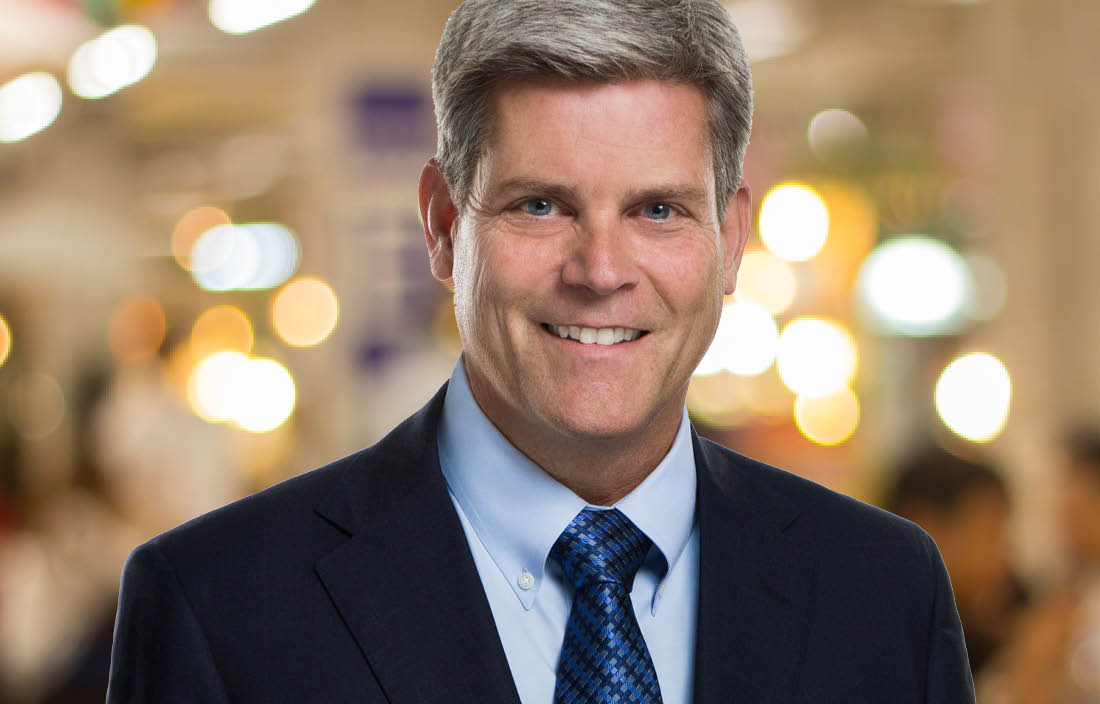
What happens when you get a president and COO of a clothier, an executive at a chemical manufacturing company, and an NFL team president together to talk leadership in front of a group of other C-suite professionals? You get some new ideas, notice some recurring themes, and you learn a heck of a lot — at least, that was my experience when I moderated the Learn from Leaders panel at Plante Moran’s inaugural Make the Mark Executive Forum for Business Leaders.
The Executive Forum gathered some of the sharpest business minds in the Midwest and beyond for an afternoon of learning, conversation, and networking. We kicked off the afternoon with the “Learn from Leaders” panel, where we brought together leaders from three long-standing, industry-leading businesses: Linda Hubbard of Carhartt (a Learn from Leaders alum), Jim M. Nicholson of PVS Chemicals, and Detroit Lions President Rod Wood. These leaders come from three completely unrelated industries, but I was fascinated by how much they had in common when it came to views on leadership, albeit from unique perspectives.
Here are five of my key takeaways from the session.
1. Keeping the right people is much harder than finding them.
Jim M. Nicolson (JN): People typically don’t leave for pay. It’s usually because they’re unhappy with the style or approach of the firm. We hook ‘em and hold ‘em by demonstrating that you can really grow here, and we do very strong marketing of new roles to our current people. Not just that, but if we like you enough to hire you, you have the opportunity to represent the company to others.
There’s no greater honor as a business owner than one of our people inviting their friends and family to work with us. It helps us acquire talent that’s often better than what we might find on the open market, and it’s a way to engage our staff that deepens their connection to the company culture.
Rod Wood (RW): (Note that I’m excluding the NFL players here!) It’s cool to work for an NFL team, so we get a lot of interest, but there’s a lot of teams out there. We do our best to hire for culture and keep compensation competitive, but we understand we’re not going to keep everyone. We’re a place people like to come shop for employees, and besides, we don’t like the idea that we wouldn’t have anybody that somebody else would want. Finding people with a connection to our city that can identify with the Ford family and the culture they put forth gives us the best shot we’re going to get at keeping people.
2. Great company cultures don’t happen by accident.
Linda Hubbard (LH): We use the same marketing internally that we do externally. We try to connect people to the mission — serving and protecting hardworking people. It took us a while to figure out, but we operate in more than 20 countries, and we’ve found that honoring hardworking people resonates worldwide. Because we’re so spread out, we use a lot of videos to make sure we’re constantly communicating the message.
RW: We have 10 home games a year — it’s pretty much like putting on 10 Broadway shows. Imagine how important each day would be if your business were only open 10 days a year. There’s a lot of reinforcing that needs to go on. After every game, we go through everything to discuss what’s good and what needs improvement; it’s during those meetings that we’re able to reiterate our values. If you expect excellence, you’ll create leaders that expect the same. Leadership sets the tone for culture.
3. You’ll never have all the answers.
JN: If you’re a leader, you’re in the risk management business. The role of a leader is to determine when you have enough information to decide and when you don’t. When I don’t have enough information to decide but can’t abdicate the decision, I call on my network of trusted advisors to see if they’ve dealt with something similar and can provide some wisdom.
LH: Ask “why?” five times and you might get to the root of the issue. My staff knows that I’m going to have questions, and they try to predict what those questions might be. I ask a lot of everybody, regardless of their level; I respect their ideas, and I seek a collaborative decision wherever possible.
RW: I try to think of Steven Covey’s four quadrants for dividing tasks by their levels of urgency and importance. If I don’t have the information but an issue is both urgent and important, I use the best information I have and get ideas from the people who might be affected most. I always have at least a plan B, but in a leadership role, you have to be prepared to have some courage and live with the consequences of a bad decision. Everybody makes them eventually.
Jim Proppe (JP): I’ve learned that it’s often a bigger risk to do nothing than to make a decision without all the facts. The hard part is that it could be a couple years before you find out if you made the right call, but you just have to trust your gut and go.
4. Change is inevitable, but not always welcome.
RW: Part of getting everybody on board with change is being open about the plan and making sure the right people understand it. If there’s a big transition, the worst thing for people to fixate on is their individual future. Whether they ask about it or not, it’s foolish to assume people aren’t worried, so it’s important to have clarity. Communicating with everybody who will be affected by a change is your best bet for getting people on board.
JN: We have a timeline in place that includes when to share new plans with the whole team. We have certain people available to field questions, and we wait until the plan is complete before sharing it with everyone. As a family business, our board of directors is incredibly valuable for getting those kinds of plans together. When we get caught up in the day-to-day, we can count on them to think long-term, focus on those important-but-not-urgent questions, and make sure we follow through on those issues. Boards are very expensive, and you don’t need to have a formal one with fiduciary duty to create a group of advisors that can have your confidence and confidentiality, poke holes in your plans, and make them more robust.
5. You can’t be the leader forever.
LH: In the last 10 years, we’ve been creating smaller projects, sort of like entrepreneurial businesses within our 130-year-old business. We’re working on getting the fifth generation of Carhartts exposed to being good owners, and we’re starting by having them involved in leadership roles within these smaller businesses. We’re helping them develop their decision-making and management skills by giving them real accountability and the right to decide. We have a plan mapped out that considers their individual passions to keep them connected, and it’s worked out really well.
JN: Folks are obliged to do annual succession planning, and everybody needs to know who’s going to replace them well before they’re needed. It helps identify who to give special attention to, and we make sure we’re investing in them. Would-be leaders who want to grow and are serious get exposure to new opportunities, and we tackle any gaps in their knowledge early on. That way, when it’s time for a leadership succession, we already have a formal plan in place and it’s not a scramble.
One more thing…
In one sentence, give us your best piece of business advice:
RW: At some point, there will be an issue, and they’re a lot easier to solve when you have close relationships within and outside the organization.
LH: Don’t be afraid to make mistakes.
JN: Build a network all the way through each level of your organization.
JP: As my predecessors told me, make sure you create your successors.




